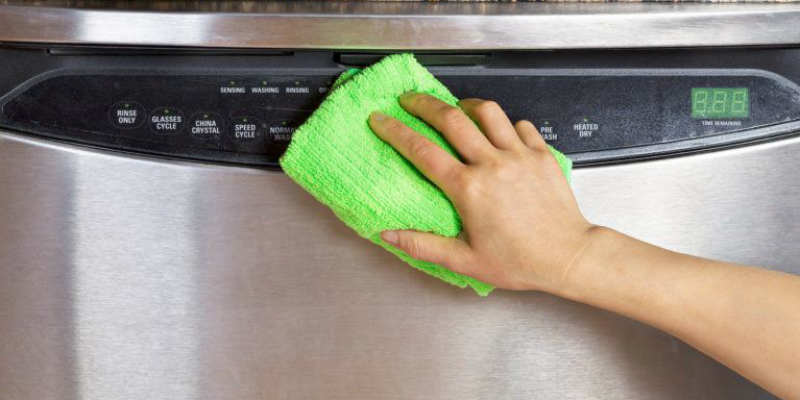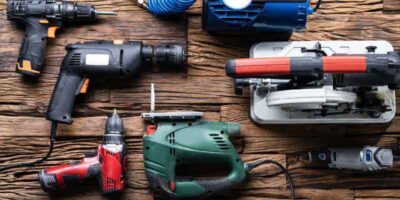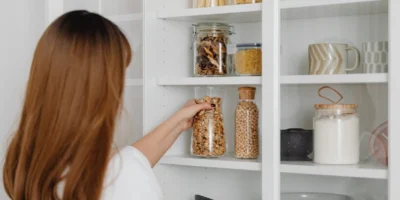For many people, everything is only really clean when it sparkles and shines. This looks particularly appealing with items made of stainless steel. But it takes quite a bit of cleaning time until the fittings in the bathroom, the appliances in the kitchen and other utensils such as cutlery or even jewelry shine again in full glory. Valuable tips on how to best clean stainless steel in your home and how to clean larger areas without streaks, using our guide on how to clean stainless steel easily.
1. Why you need to clean stainless steel
Due to its shiny appearance and its insensitivity to scratches, stainless steel — also known as inox steel, or inox — is classified as a particularly high quality material. That is why stainless steel is especially popular wherever it is important to visually enhance living spaces or other things.
A bathroom with stainless steel faucets and handles usually looks particularly luxurious. But also in the kitchen stainless steel is used in many ways and used as a material. Many kitchen appliances such as ovens or hobs and sinks rely on stainless steel, because the material not only looks good, but also very functional.
For example, heat and moisture initially make hardly any difference to the material, which is generally regarded as rust-free. But over the years, even stainless steel objects can turn black, calcify or just look ugly.
Even fingers often leave marks on the material and interfere with the look. How to clean the individual parts made of stainless steel and make them look beautiful, you can read in our budget tips.
2. What you should consider when cleaning stainless steel
Good to knowWhen stainless steel starts black, it is comparable to silver cutlery. This oxidizes in the air and thus assumes its typical color.
Stainless steel is usually available in several versions. For example, there are the following designations for stainless steel:
- brushed stainless steel
- shiny stainless steel
- stainless steel
- nickel-free stainless steel
Depending on which alloy has stainless steel, it is also chromium or titanium. Stainless steel is usually corrosion resistant and nickel-free stainless steel is particularly easy to polish.
3. Which cleaning agents help with the care of stainless steel
In addition to robust methods such as a steel wool, for example, for pots, there are also some home remedies to get clean stainless steel without scratches again.
3.1. How to clean tarnished silverware and jewelery
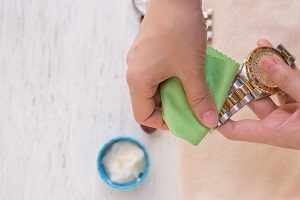
Thoroughly polish tarnished tarpaulins or high quality stainless steel jewelry.
If you have cutlery or jewelry made of stainless steel, which you started, you can get rid of the discoloration in several ways. Try a water bath first. Run warm water in the sink or bowl and add a few drops of dishwashing detergent.
Leave it all for a while and then rinse the cutlery or jewelry with a soft cloth or sponge. After the water bath you should let everything dry well and then polish.
Rub with a dry cloth until the stainless steel begins to shine. A microfibre cloth is also suitable for this because it is particularly dust and lint-free. Further information about the advantages of the microfibre cloth can be found in this microfiber consultant .
If the use of water and detergent did not help, try using soda or a caustic soda solution. Soda or baking soda also has a good cleaning effect. To do this, place the utensils in the caustic soda solution or immerse a cloth in the caustic solution and simply rub the objects thoroughly.
3.2. Help large areas to shine again
Do you have in your kitchen a hood or a refrigerator made of stainless steel, you are already dealing with a larger area. Refrigerators are often made of brushed stainless steel, which means they should always be rubbed off with the grain only.
But brushed stainless steel is a bit sensitive: rub a cloth against the grain, risking unsightly streaks in the surface. Be sure to use a soft cloth and a special stainless steel cleaner to remove fingerprints on the refrigerator.
For example, stubborn stains can be handled well with a few drops of oil. For example, rub your fridge with some cooking oil. In this way, you also offer the stainless steel a protection against fingerprints again, since they now stick less well on the surface.
3.3. Remove limescale deposits on the stainless steel
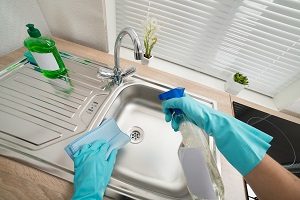
In a stainless steel sink, remove lime deposits best with vinegar.
Whether in the kitchen or in the bathroom, on faucets and handles as well as in sinks made of stainless steel, wherever water is involved, lime often deposits. To effectively combat limescale deposits, only vinegar usually helps.
Vinegar cleaner or a few drops of vinegar essence in the cleaning water dissolve the lime from the surface. First wipe everything with a sponge and the vinegar water and then rub everything dry again with a lint-free cloth. This is how you simply bring stainless steel back to shine.
4. Further tips for stainless steel care
Here we introduce you to further cleaning agents or home remedies for the cleaning of stainless steel:
| ALCOHOL: works against greasy stains on the surface simultaneously disinfects large areas | |
| ACETONE: dissolves greasy residues on stainless steel surfaces cleans along with a cotton swab also angled or very small corners | |
| CITRIC ACID: removes heavy soiling due to limescale deposits can also on stainless steel in the food industry, ie for pots and kettle , use |
5. What you should pay attention to
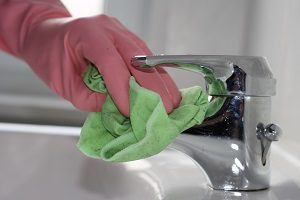
Always clean fittings with a gentle cleaning agent without scratches.
Please do not use any chlorine-containing or bleach-containing cleaning agents in your cleaning action . These can attack the material surface and make the stainless steel susceptible to rust. You should also handle the use of steel wool carefully.
Wherever possible, use a special care spray for stainless steel. This forms a protective film on the surface, which has a water-repellent effect. At the same time, the adhesion of new impurities by dust and dirt is prevented.
6. Clean the FAQ on stainless steel
What is the gentlest method for cleaning stainless steel?
Especially gentle is of course the exclusive cleaning with water and a maximum of a little detergent. However, stubborn dirt needs slightly more effective cleaning agents as we have presented to you.
What to do with stainless steel outdoors?
You can also use the cleaning tips presented here in outdoor areas such as stair railings. The use of distilled water during cleaning is also particularly suitable .
As a result, direct new deposits of lime are initially excluded. A water-repellent care spray also does good work here.

